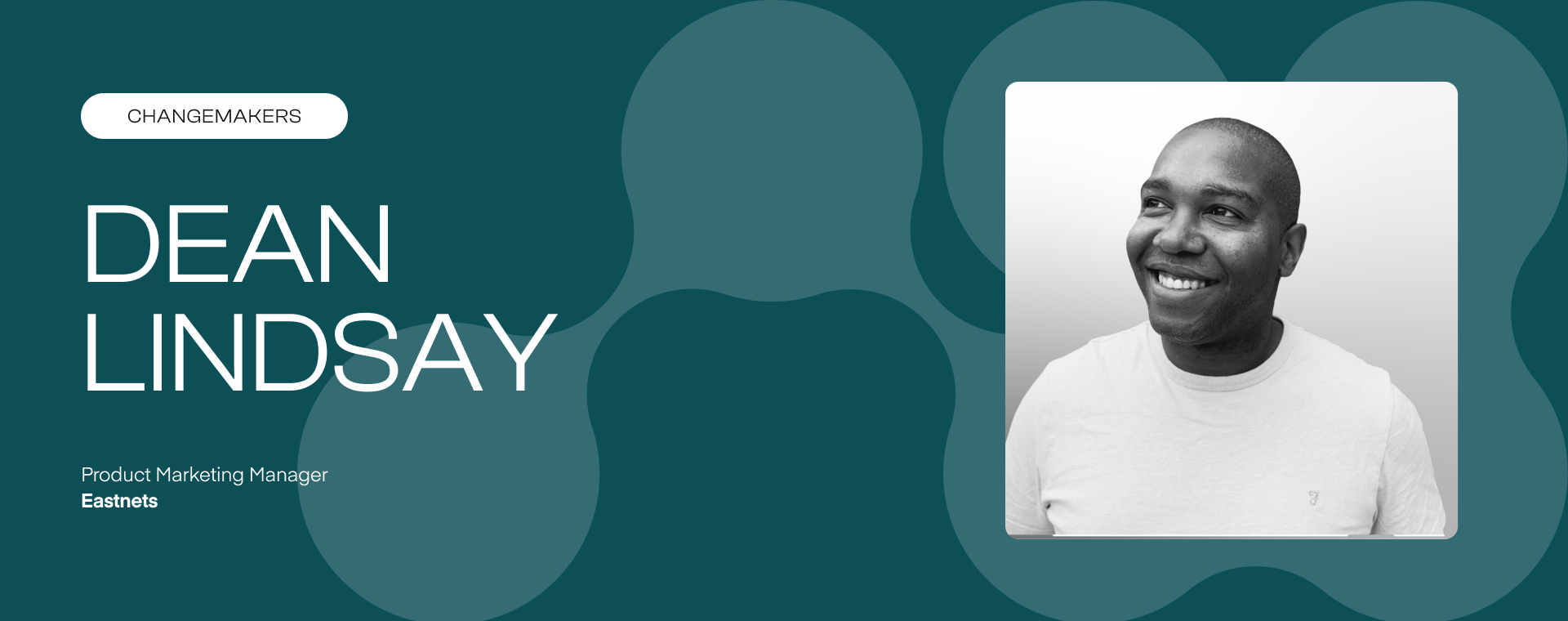Inside Eastnets: how Dean Lindsay uses real customer stories to shape products and sharpen positioning
How honest customer conversations, advisory boards and a focus on real pain points are helping a fintech refine its positioning and spark new product ideas.

Tell us about yourself.
I’m Dean Lindsay and I’m a Product Marketing Manager at Eastnets. We’re an anti–money laundering and anti-fraud organisation helping banks, fintechs and corporates eradicate financial crime. My role is to bring our products and platform to life, understand what keeps our ideal customer awake at night and to show how we can help customers save time, save resource and, most importantly, stop bad money entering their organisations.
How do you see your role as a marketer in driving broader industry or sector change within your space?
I think it’s about really understanding pain points and stepping away from that kind of feature approach and understanding how we help them and how our products can really bring to life and support what they're doing. It's about how we can save time and resource – and most importantly, stop ‘bad money’ getting into their organisation.
That's why we were founded originally around 40 years ago – our founder, who very much wanted to be at the forefront, believed in using strategic partnerships to eradicate this. It's a huge global challenge and problem, and we're really pushing to resolve that.
What's the most provocative idea or strategy you've implemented in your b2b marketing, and what was the response?
The boldest was a warts-and-all customer story campaign from my time at Intuit QuickBooks. Instead of the usual formula where the company says, ‘we had a problem, we went to this company, it was great’ – we took a candid approach. We asked customers what we weren’t doing well. We put the ‘holier than thou’ attitude to bed and asked ‘how are we working together to eradicate your problems?’.
It cut through with a video which was essentially someone talking openly about their experience, including what hadn’t gone well. It was really enlightening to watch an organisation be that bold. They are now serving their customers much better.
We did get some negative feedback, but that was part of it. By putting ourselves out there, we opened the door to conversations with customers who, for whatever reason, hadn’t had a good experience. However, it allowed us to create stronger relationships and resolve their issues.
This linked to the first customer advisory board I launched there – something that really sparked my passion for customer advisory boards. It showed me the power of using real customer perspectives in a transparent way.
Can you share an example of how you've used storytelling to shift perceptions in your industry?
A nice segue! During my time at Checkout.com we used customer advisory boards to get close to big global brands and understand what keeps them up at night. From those conversations we got the idea, messaging and positioning to start a new product which emerged directly from conversations with those customers in the room and was brought to life around six months later – which still serves them today.
For me, that was a great example of storytelling because it started with really listening to those customers, then continuing the conversations outside the customer advisory board and saying, ‘hang on, there’s actually an opportunity here to create a product and a new revenue stream’.
We also had the right people in the room from our side – product leads, customer success leads and the CEO – all listening to those pain points. Afterwards, when we did the retrospective on the customer advisory board, one of the big insights was the potential to create a marketplace product like other organisations already had. That really got the ball rolling: continuous conversations, customers' beta testing and then turning it into a product.
They were an organisation that worked at real speed. The customer advisory board went from idea to reality in about four months and within six months the product went live. It was really satisfying to see that journey from customer insight to a live product.
In your view, what do you think is the biggest change needed in b2b marketing right now?
I’ve touched on it, but it’s really about getting in front of customers. What are you doing to listen more and speak less? What are you doing to make sure you’re actually in front of them? That’s how you improve your marketing, your messaging and your positioning – and how you really understand what keeps them up at night.
I also think we need to be bolder and braver in our creativity and messaging. If we’re being honest, if you look at the content from one website to another in the same sector and took away the brands, you often wouldn’t be able to tell them apart. It’s about getting to real differentiation. How do you do that? You listen more, get closer to customers, really understand what’s happening in the industry and, from that, make bold, informed decisions.
If you look at the content from one website to another in the same sector and took away the brands, you often wouldn’t be able to tell them apart.
What stops marketers doing that is a kind of group think. Everyone is trying to do the same thing, thinking ‘well, if competitors do it, then we should do it’. But the key to standing out is to truly differentiate. How can we present this information in a different way? Is it the format? Can we be more creative with it, more playful with it, come at it from a different angle? Those are the things we need to do.
The analogy might not land, but it’s a bit like the old IBM mindset: you pick IBM because it’s the safe option. Nothing against IBM, but you need to stand out, especially if you’re a startup or scale-up going up against much bigger organisations. You have to be clear on how you stand out and where you stand – and then bring that to life.
How do you encourage your team or organisation to think boldly and embrace change in their marketing approaches?
I think it’s about giving people the time to test, learn and fail. That’s critical. What can happen is you get caught up in the vortex of projects, tasks and delivery – being reactive to what’s happening and what you need to do. But it’s important to create the space to test and learn, and to be brave enough to do something different. It has to be more than a tiny copy change. It’s about really thinking differently about how we present something, the messaging behind it and how we deliver it.
It’s important to create the space to test and learn, and to be brave enough to do something different.
That’s something I’ve done at many of my previous organisations, and I’m beginning to do it here too. I’m making sure it becomes part of how we work at Eastnets. The fear of failure definitely holds people back, which is why leadership needs to create psychological safety for it. You have to give people the opportunity to try things.
One way of doing that is saying that 80% of what we do will always be the core work, but the other 20% is there to test something completely different – whether it’s a direct mail campaign or something totally unexpected to get cut through. That’s really important. It lets your team remove that fear, try things and learn from whatever happens next.
What do you think in one word makes b2b marketing changemaking?
Courage.
What is your one piece of advice to future change makers on how to be more effective in B2B marketing?
I think it’s to really understand your business and what you’re trying to achieve. Everything you do from a marketing perspective should roll into that. You want to be creative and bold, and you want to test new things, but you need to tie all of that into the commercial needs of the business. Being commercially ready and understanding those priorities is essential.
If you’re not in the room for certain conversations, be curious. Ask for the content from those meetings. Get the slides. Ask your manager what the two or three key talking points were, so you can do your own research afterwards. Have regular conversations with people across the business – sales, customer success, pre-sales, customer service – and get a feel for what’s actually happening. What often happens is you join a company, you meet lots of people in the first 90 days, and then those conversations fade away. Keep that cadence going. Stay connected to what’s happening across the organisation.
Hybrid working does make it harder because you don’t get those water-cooler moments. But you can still set up a regular rhythm with leaders or people in different teams. Three months down the line you can get time in their calendars to talk, share ideas, see what they’re working on and understand how it ties into what you’re doing. Being consistent and planning those touchpoints helps you stay ahead and stay aligned.
Changemakers spotlight innovative B2B marketing leaders who are driving industry transformation, where we explore bold strategies, disruptive ideas and the power of marketing. Meet more Changemakers here.
More Insights from alan.
To re-form your industry, we must re-form ours first. From our visceral point of view on creativity to our incisive approach to strategy, delve into our provocative thought-leadership on how we’re aiming to subvert B2B’s status quo.




